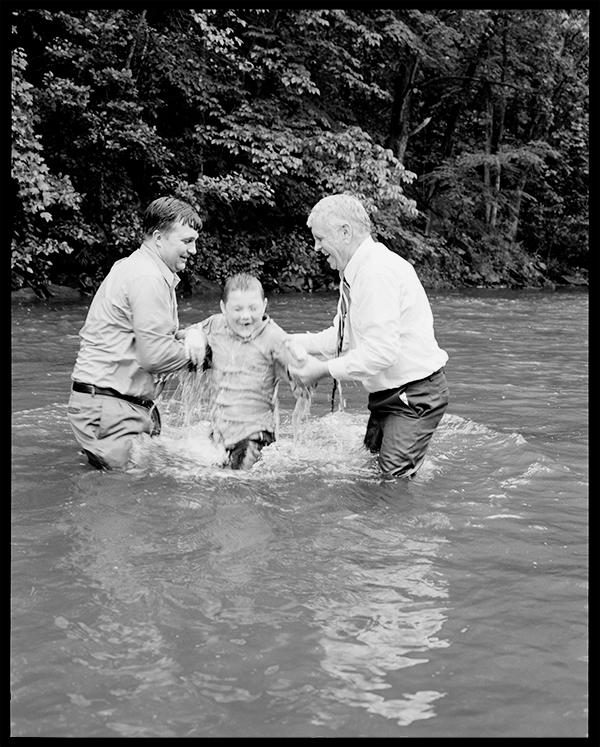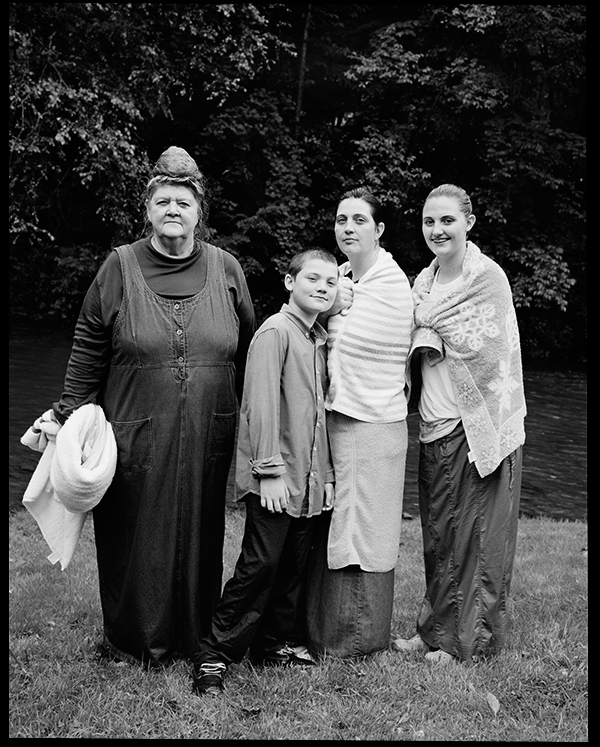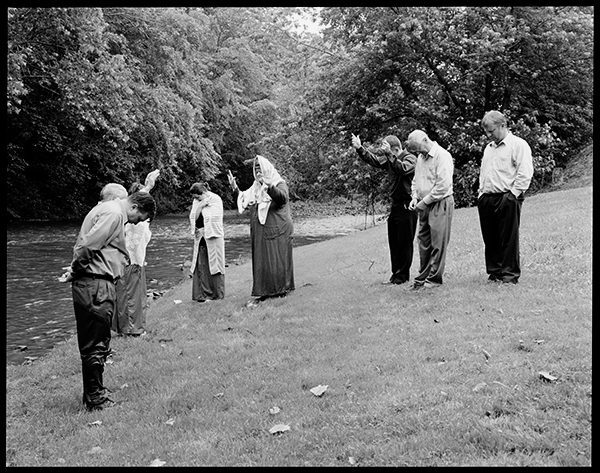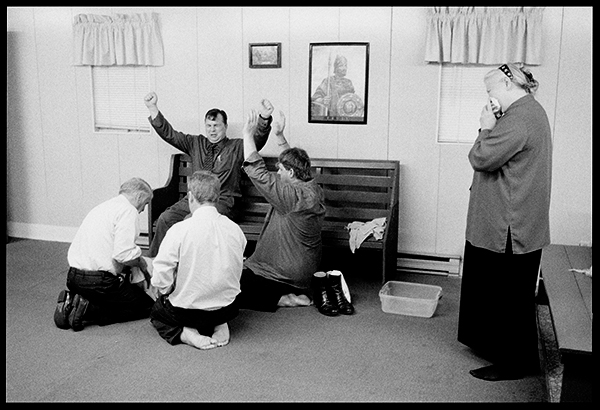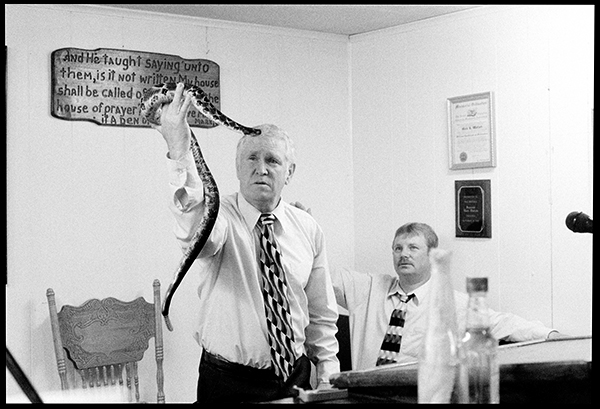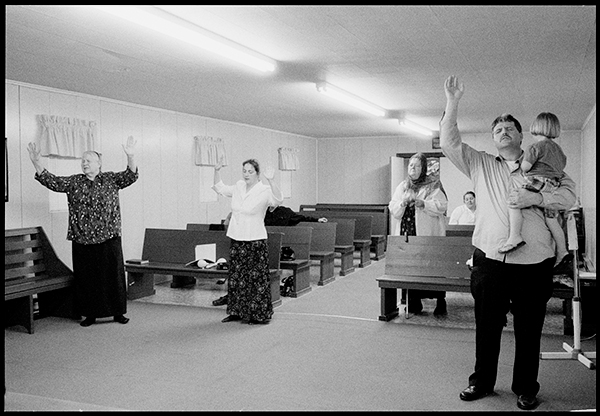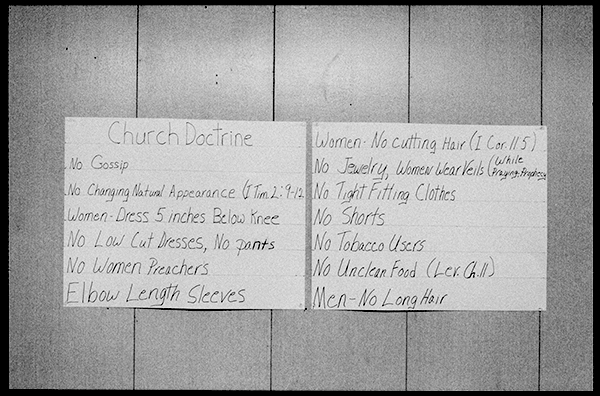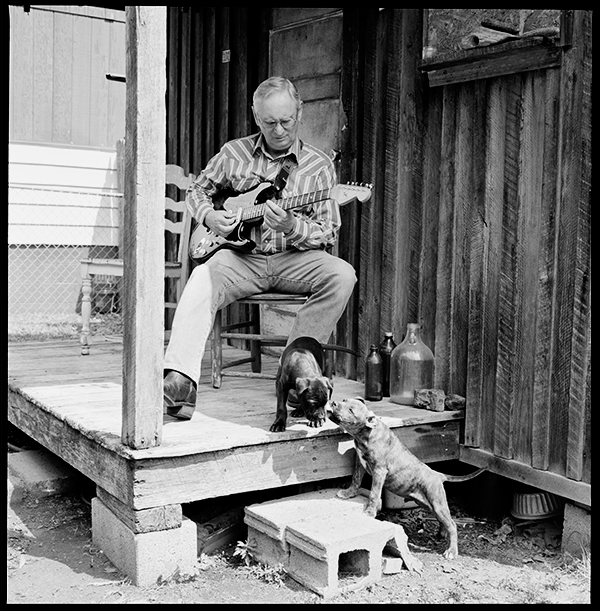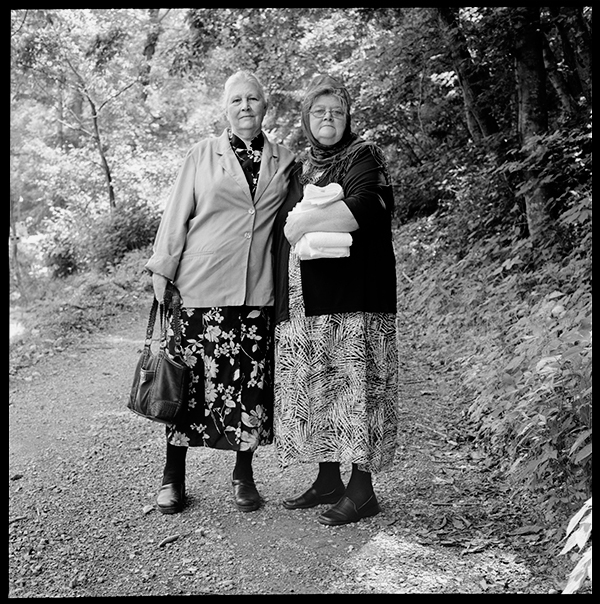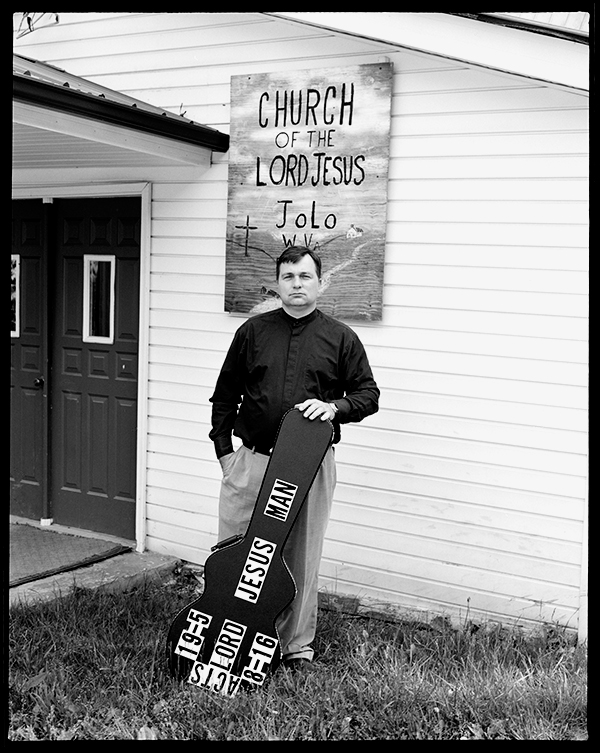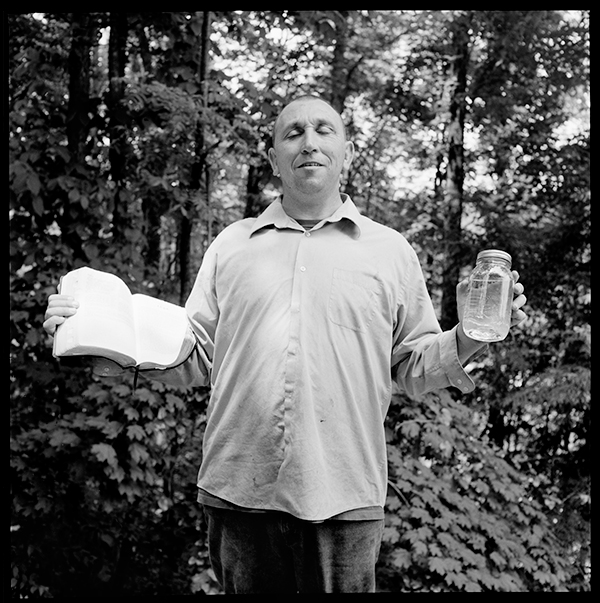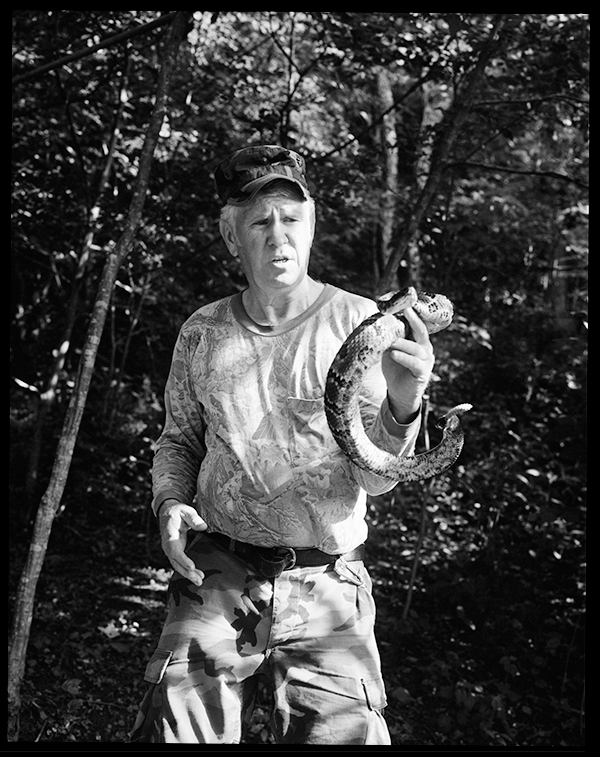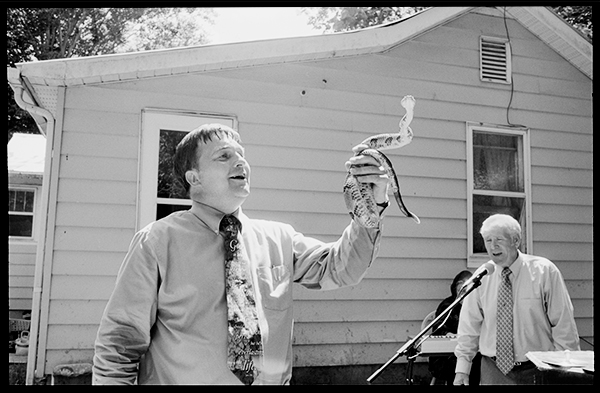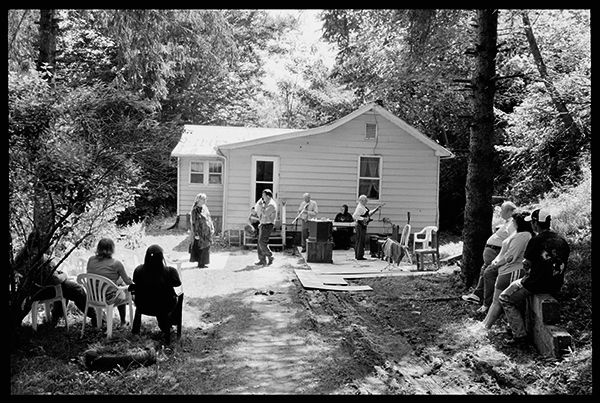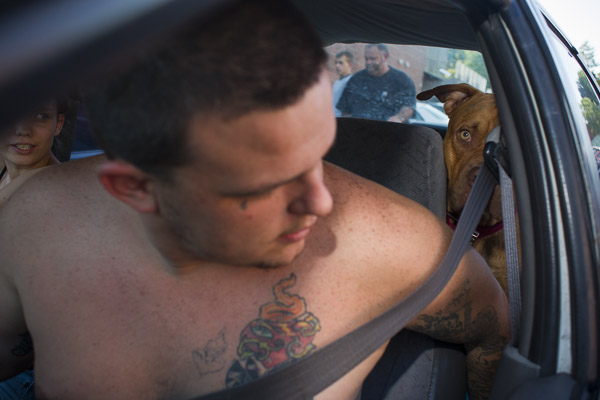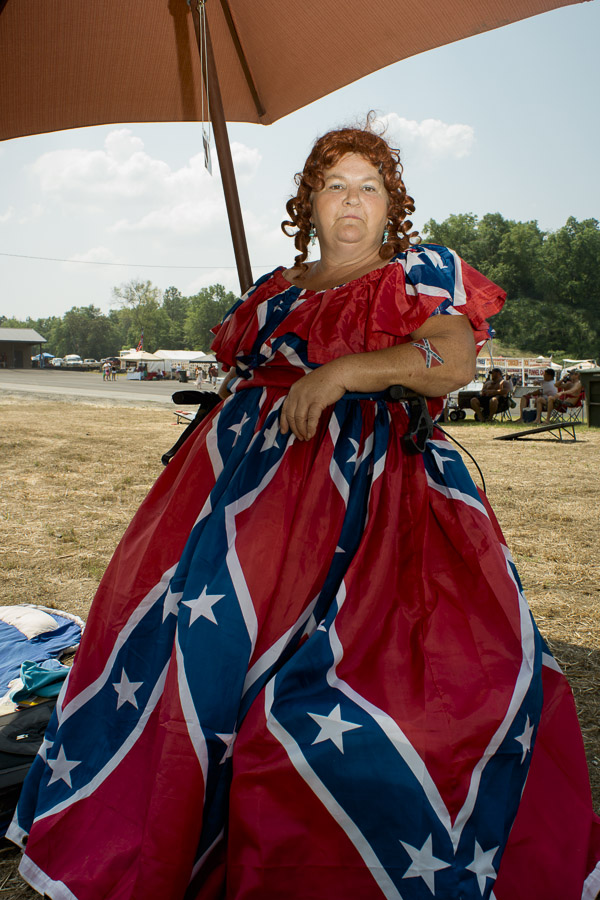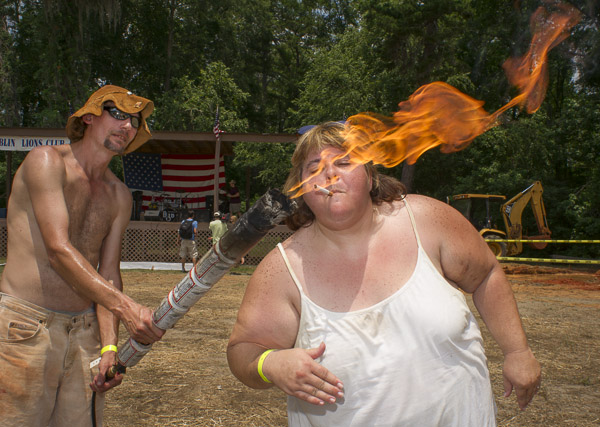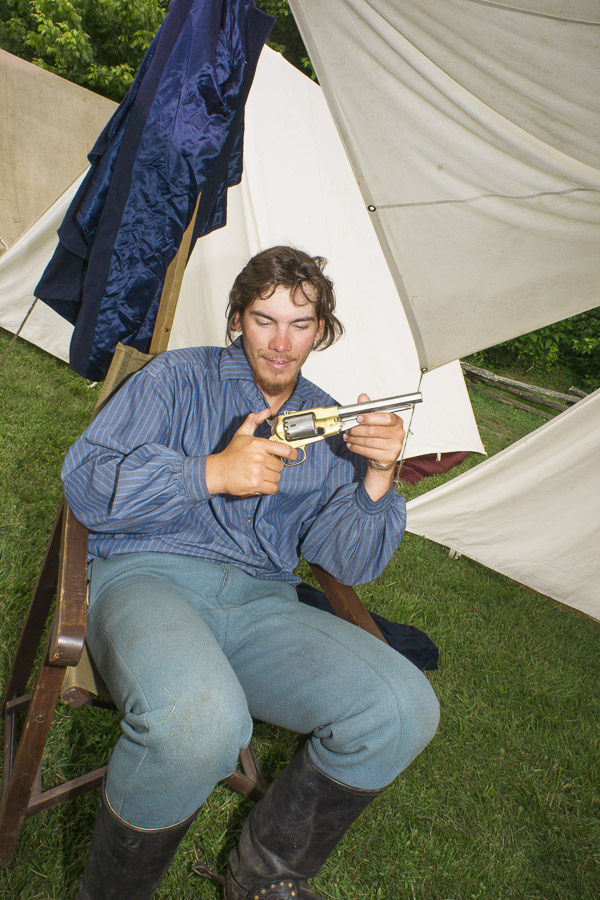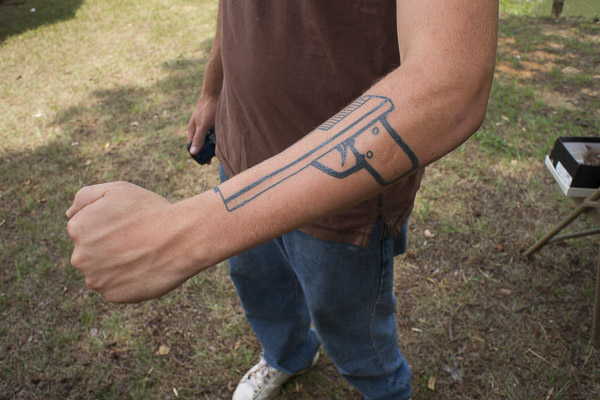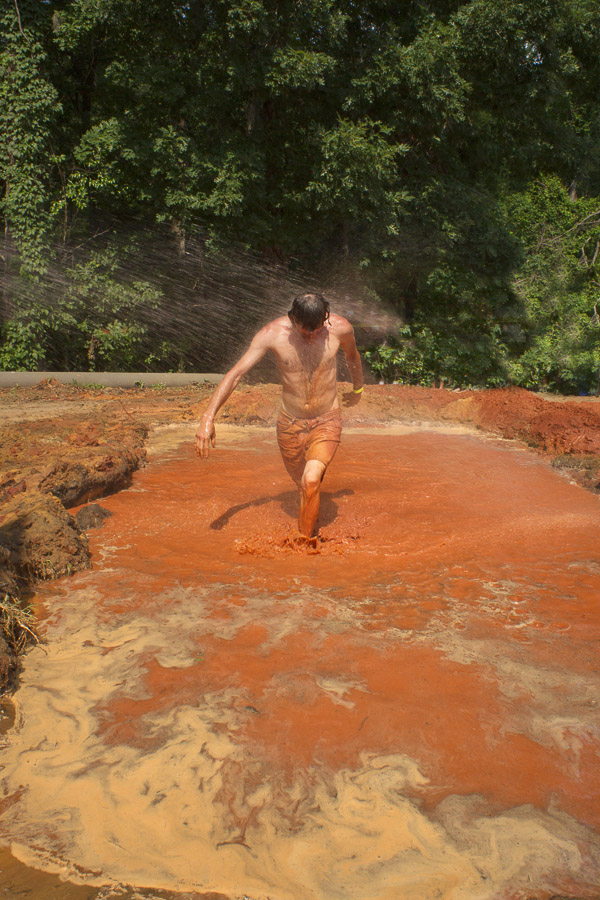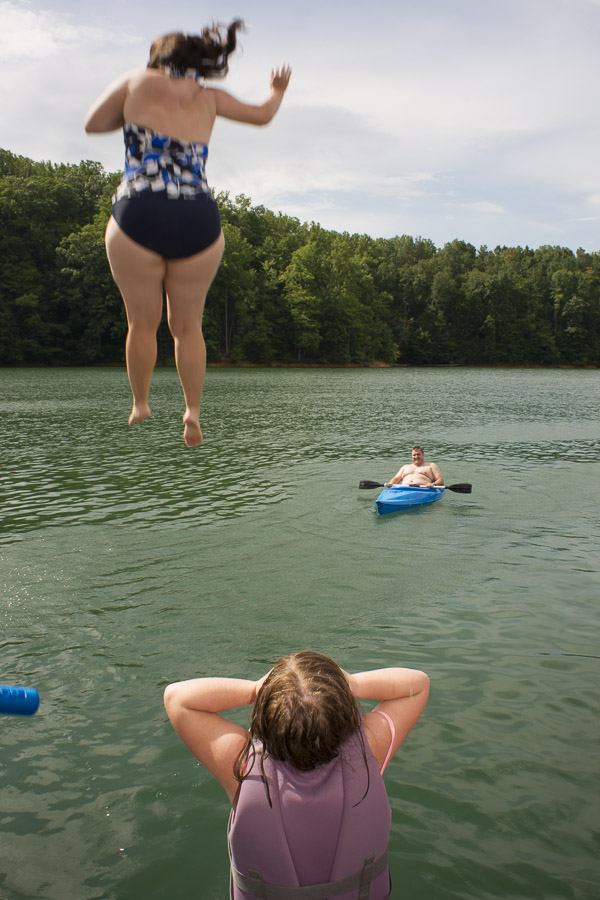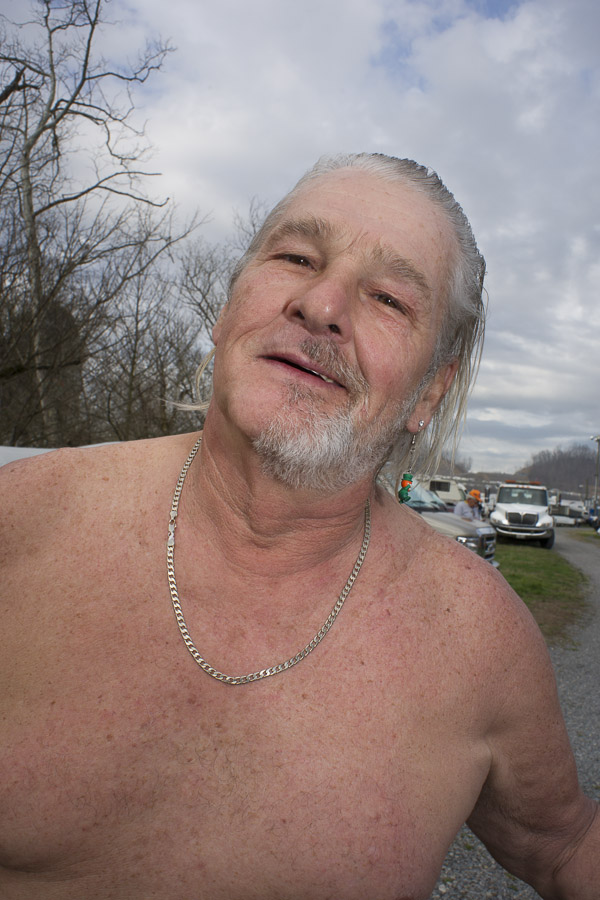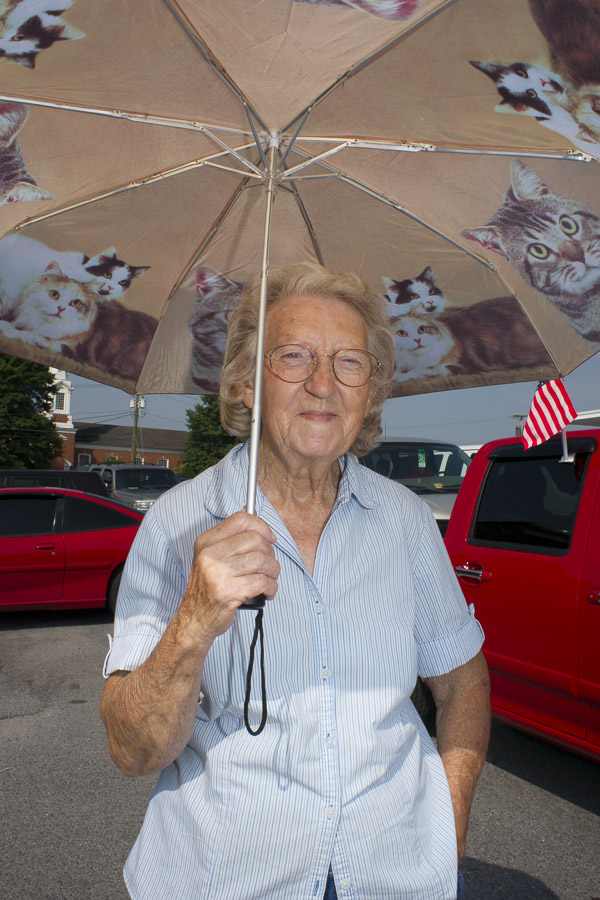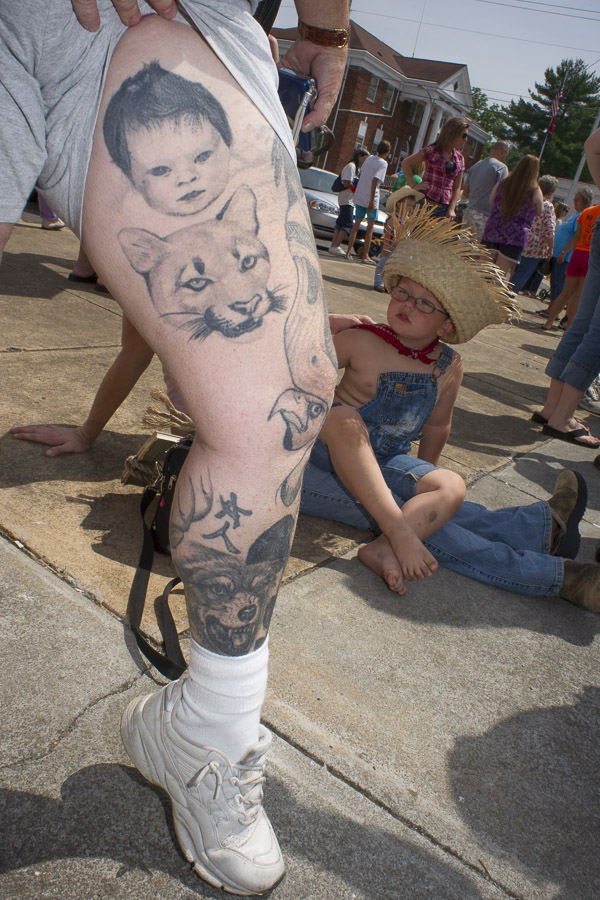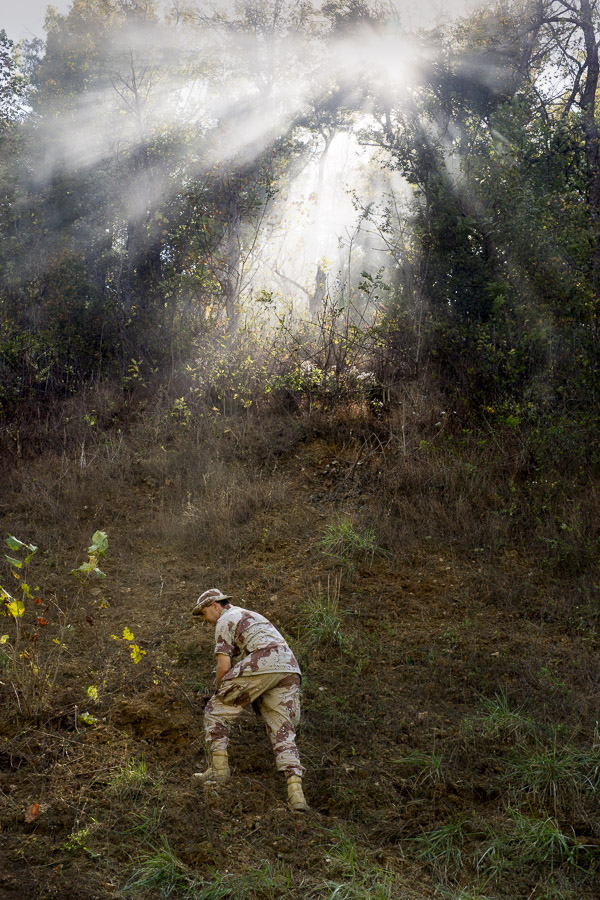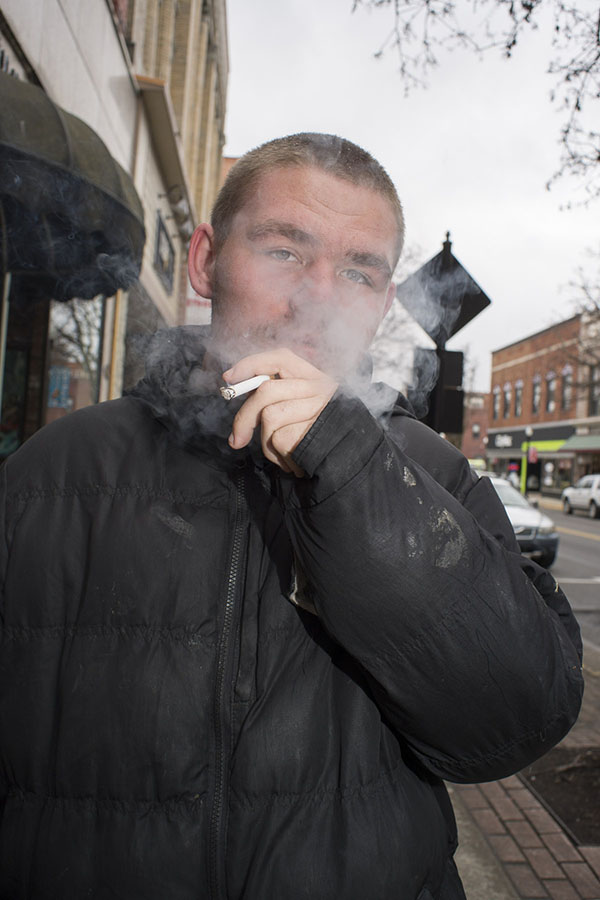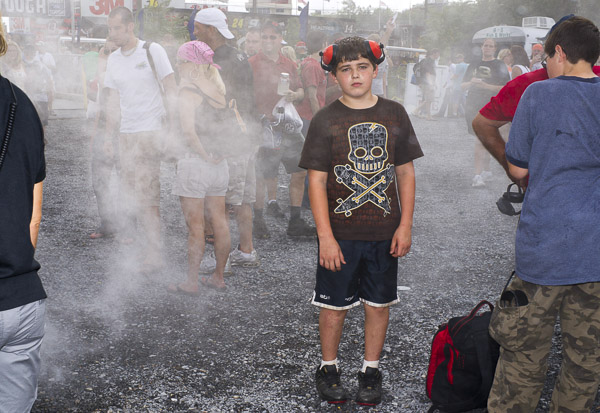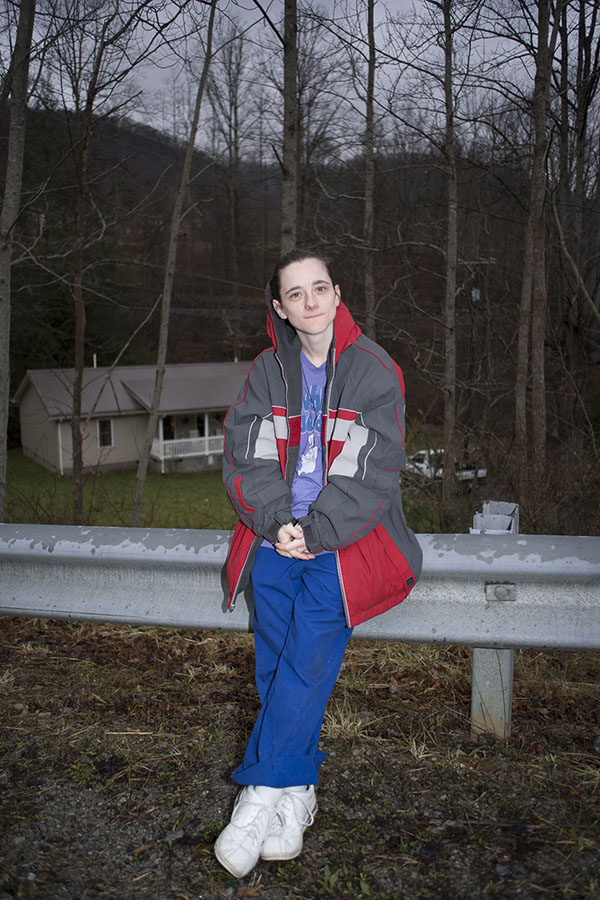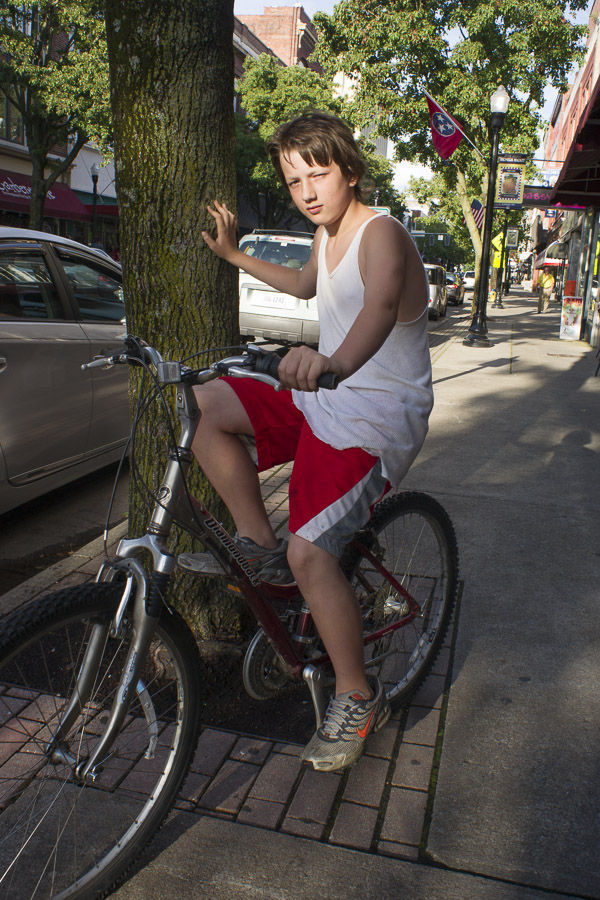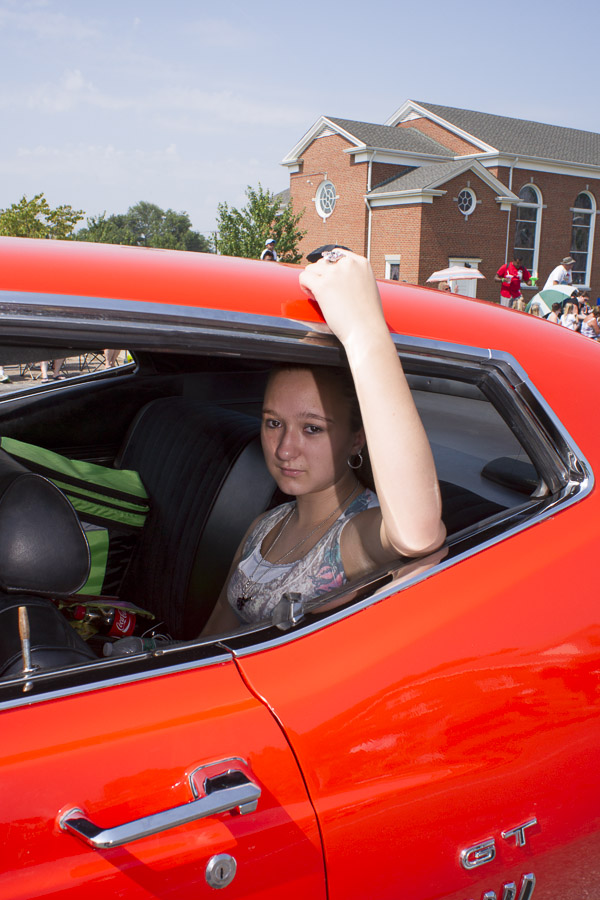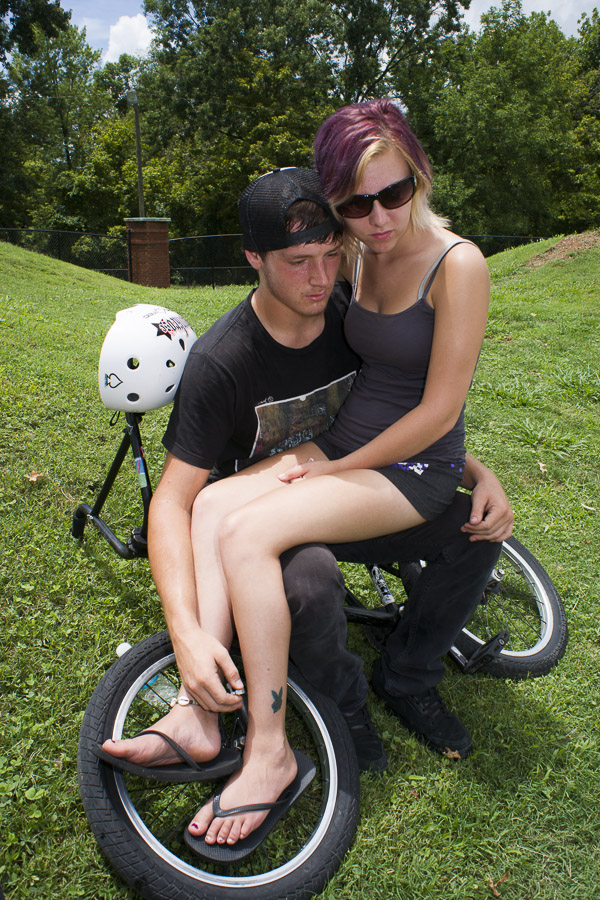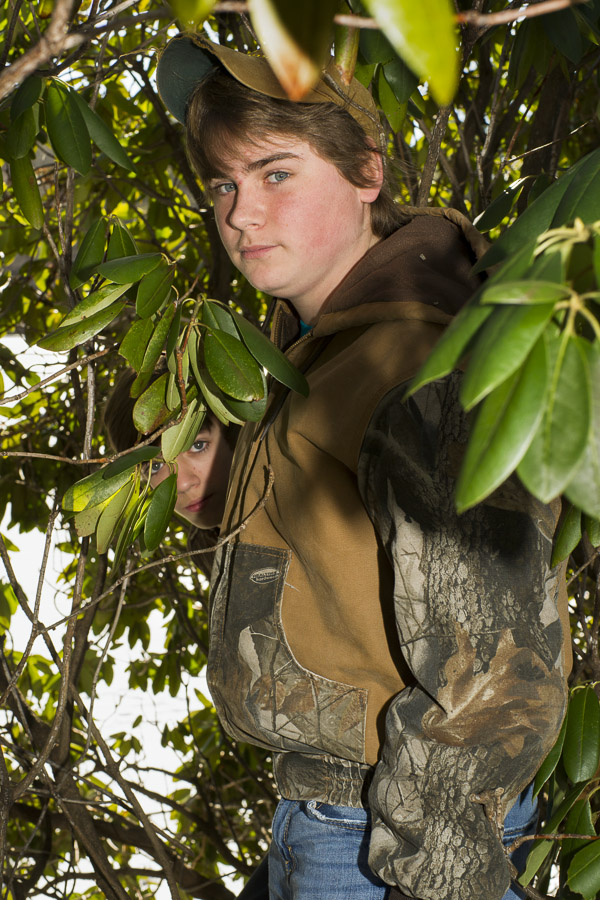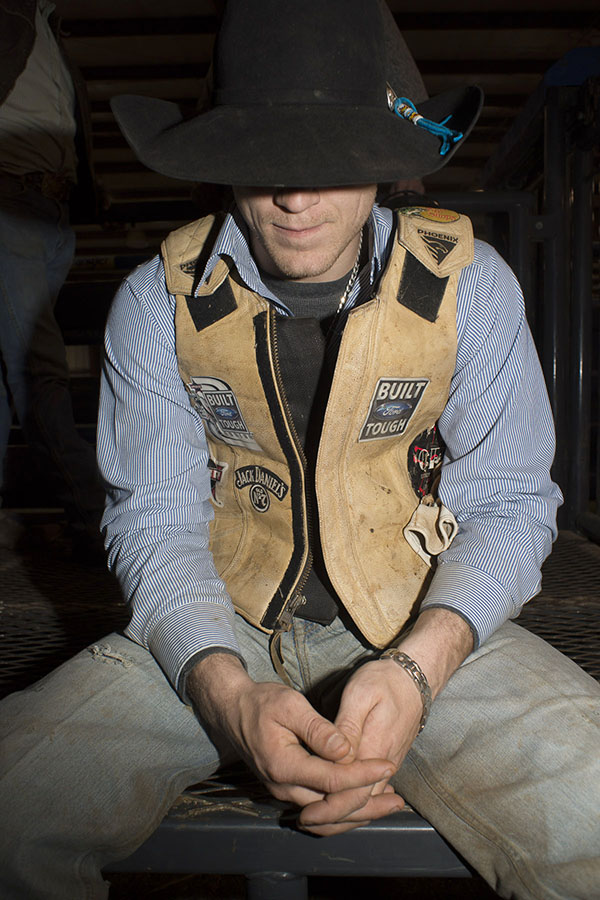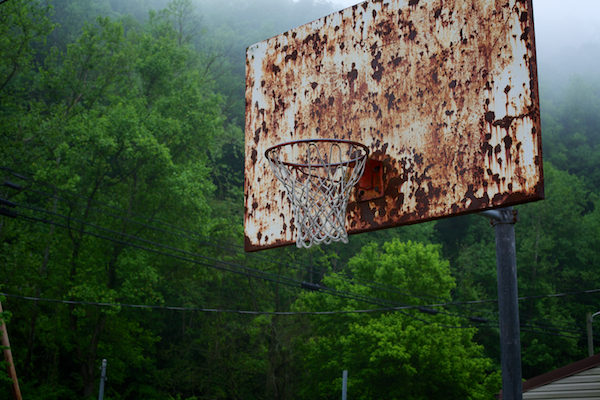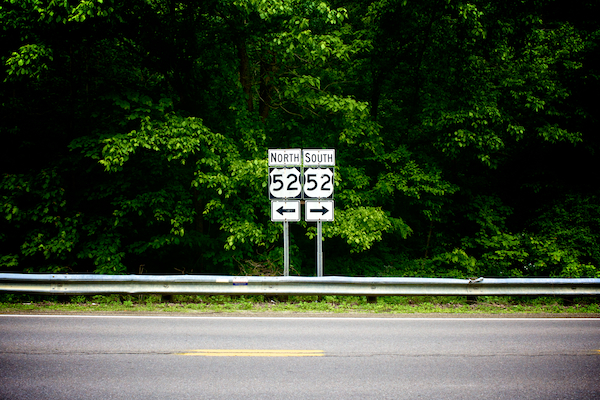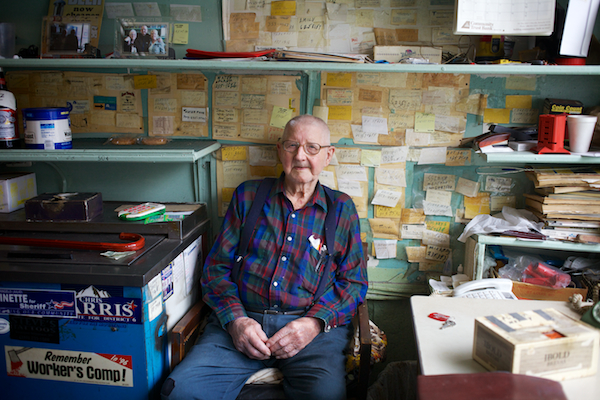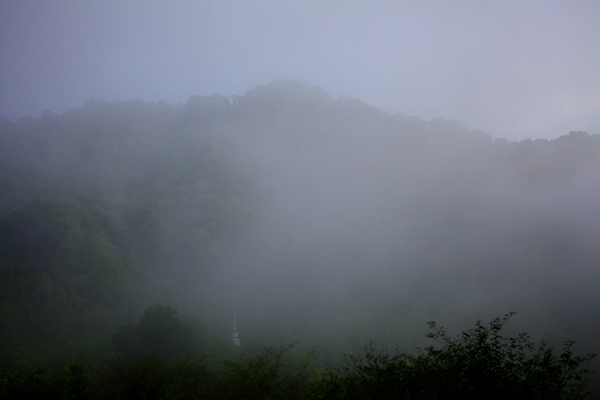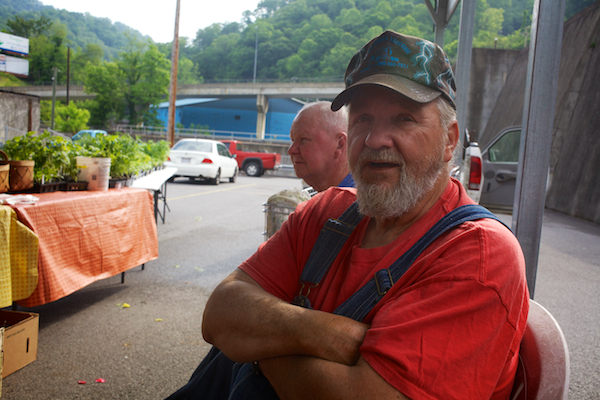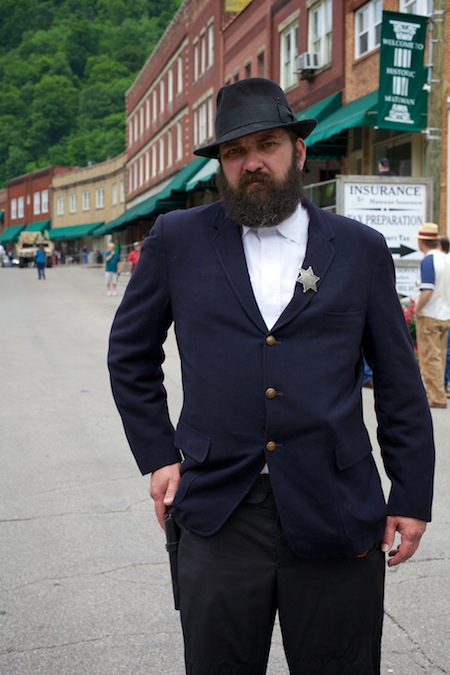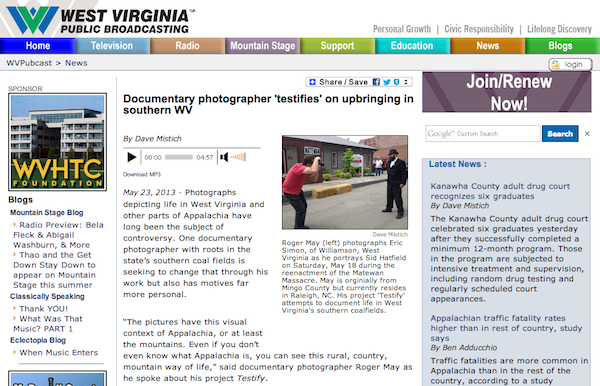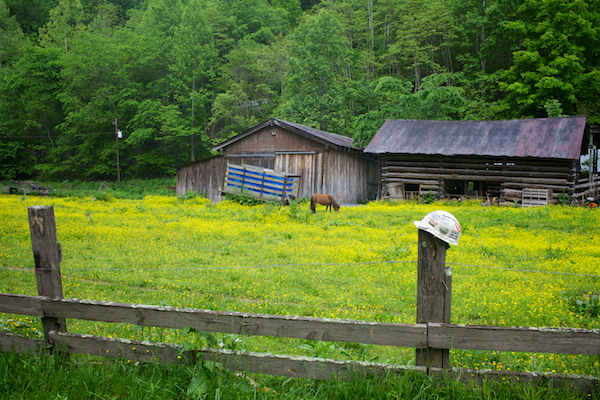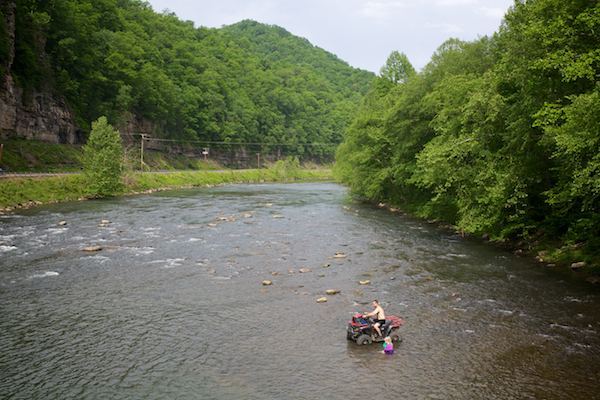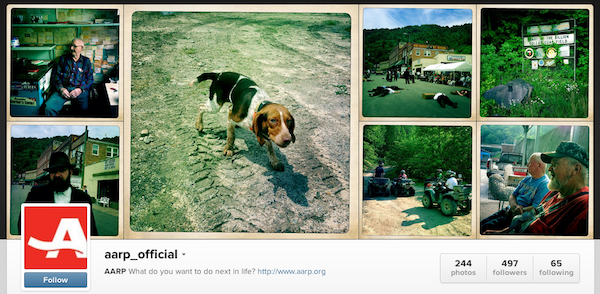Justin Kaneps is a San Francisco-based photographer who recently completed his BFA at The Art Institute of Boston. I first saw Kaneps' work from Appalachia at last year's ALL VISUAL TRIANGLE in Durham, North Carolina. I reached out to him in March to see if he'd like to participate in this series and perhaps do an interview. We've both been a bit busy over the last few months, he with the New York Times Portfolio Review and being announced as a Magenta Foundation's Flash Forward Emerging Photographer and I was managing the Testify Kickstarter project (thank you all!).
Without further adieu, I'd like to share some of Kaneps' work from his series In Our Veins and his first interview.


Your project In Our Veins deals with the relationship between America's dependency on coal and its impact on Appalachian people and communities. Can you tell me about the project title?
There have been many aspects that led me to the title. I was in a dispatch office in Moundsville, West Virginia and the dispatcher told me an extraordinary story about how he lost his leg in a mining accident when he was working as a bolter 20 years ago. He twisted around in his chair and pulled his pant leg up to display his prosthetic. I was in awe; it was made of carbon fiber (carbon being one of the primary compounds in coal). Coal took his limb, replaced it, and literally became a part of his body.
A concept I came across while working in some of the communities that these people are born into coal, work in coal and die in coal. It’s in their blood. This idea is explored in the Merle Travis song, Dark as a Dungeon. Travis sings in this miner rally song, “until the stream of my blood turns as black as the coal.” I love that it suggested transformation, becoming a part of the resource or landscape. And I began to consider how we refer to the way coal runs underground--in seams or veins. I wanted the title to refer to the fragility of the landscape, its inhabitants and the connection they have to it.


How did the project come about? Why Appalachia? How much time did you spend there?
I had a keen interest in American landscapes that are impacted by industrial development, farming, housings development, etc. and the ways in which society navigates and inhabits these new resulting environments. I was obsessed with Edward Burtynsky's landscapes while making this work, but I later became frustrated with the work I was making because it became more about the geography (or landforms) and less about the sociology. I wanted the work to be about humanity and its vulnerability in conjunction with the surrounding landscapes.
In Our Veins originated from my interest in company or industry towns and the pride these “idyllic” towns instilled and the ways in which they helped form the American economy and identity. I found myself exploring and photographing abandoned coal breakers in the Shenandoah Valley of Pennsylvania, and that’s where my interest in coal was ignited.
My first true introduction to Appalachia was during a trip I took to Athens, Ohio in October of 2011. At that time I was unaware that it would send me on a trajectory that would eventually form this body of work. I was staying with a friend who was studying at Ohio University; she suggested I take a drive to explore the towns of Cheshire and Racine, Ohio. Within a fifteen-mile radius, these two towns sat amidst four coal-fired power plants. I had never been in the presence of coal plants of this stature in my life; the people, the small town life and the conditions of the surrounding environment humbled me. Following that initial trip, I made about eight trips of lengths varying from one to two weeks. I wanted to know more about the people who helped keep the lights on, and I traveled to areas that concentrated exclusively on coal production. With each trip I learned more about the region. I wanted to see more and understand more, and subsequently I became enamored with the history and culture of Appalachia.


In your statement, you note approaching this work with "profound compassion and respect." When I first saw your images, those were the words that came to mind for me before even reading your statement. As you know, Appalachian imagery has had a notable absence of these ideals. Can you expound on this a bit and whether or not that affected your work?
The absence of these ideals had a prodigious effect on my work. As a native of NJ I am an outsider in Appalachia, I knew I was dealing with sensitive subject matter and I wanted to maintain a strong integrity in the way I made the images. I want my viewer to respect the region, but also be aware of its darker sides. Your question of why these ideals are absent is a difficult one for me to answer. Artists, writers and “Hollywood” tend to focus on this “dark” side, and I wanted to avoid including it exclusively, but it’s there and it needs to be presented.
There are varying classes and cultures living in every region of the United States, yet why are we drawn to the poverty of Appalachia and harshly critique or deride it? I’m perplexed at the lack of contemporary images evoking pride in Appalachian culture. Personally, I respect those who work in mines or have to live amidst the coal plants’ plumes; it’s not an easy way of life. I have a lot of questions that are still unanswered, and the images I will make in the future will hopefully provide those answers for me.


How aware were you of the visual stereotypes of Appalachia and how did you work to avoid them?
When I started, my perception of Appalachia came from films, books and photographic works. I was aware of other photographers who were making work in the region, such as Shelby Lee Adams, and how his images operate to viewers.
As we are all aware, Hollywood neglects to depict Appalachia in a kind light and constantly recycles and reinforces the stereotype of a “hillbilly,” a term I believe that was coined in the early 1900s in a New York Journal article.
One book that created a quandary amongst historians and critics, and yet is considered important (I’m told), is Henry Caudill’s, Night Comes to the Cumberlands. He received a lot of criticism for accuracy in the book; it’s an oral history passed down five generations from a native Kentuckian. Caudill mentions that those who settled in Appalachia in the Seventeenth and Eighteenth centuries were the “social outcasts” whom England and Scotland wanted to dispose of. They worked for their freedom in the new world on tobacco plantations and fled to the mountains for cheaper land and to escape the plantations after their indentured agreements were satisfied. His text suggests that Appalachians were ruffians from the beginning of their existence. He plays into the stereotypes, and most stereotypes have some truth behind them, but they prevent us from seeing beyond the stereotype and delving into the reality of who someone or what some place accurately is.
I’ve had countless conversations with Appalachians about stereotypes. Some look at me and laugh when I say I am from New Jersey, and ask me why I don’t have orange skin and spiky hair. This stereotype about New Jersey exists, and because of media representation, some may think this is true of the majority of our state. This is also true of Appalachians stereotypes; they exist, but there are more to the people and place than what meets the eye.
I wanted to point to cultural signifiers, but that had the potential to reinforce stereotypes if photographed as the primary subject. So I challenged myself compositionally to work these into the images in a subtler respectful manner.


You talk about the underlying connection you have with these folks, through the land and the air. That's incredibly perceptive for someone as young as you are (how old are you, by the way? 22?). I think that's something a lot of people don't realize - young and old. Or maybe they do realize it and just don't care. Where did your sense of scale and relation come from (I guess values is what I'm asking about)?
(I'm 23.)
Thank you for the compliment, Roger. I owe those values to my parents. I spent my summers in coastal downeast Maine. I grew up exploring the wilderness there, getting lost in the pines and just sitting by the ocean for hours on end. I dreaded heading back to my populated suburban New Jersey town. I longed for the warm, but crisp air that existed in my summer days in Maine and when we would have a day similar to that in New Jersey, I would inhale a deep breath and pretend I was back amongst the pines in Maine. I loved how just air could allow me to access a place.
It wouldn't be until I was older that I would really think about how deep that connection is. I want my viewers to realize that they aren't removed from the coalfields completely, that we share this country and that our necessities and resources come from all different regions. We share this environment, and what we do, small or large, has some direct or indirect effect on one another.
I imagined the miners producing the coal, the plant producing the energy running through our power systems and our country flipping on the light switches. We’re closer than one may realize. How often does one really think about that?
Prior to making this work, I made a 5,100-mile car trip one-way across the United States, and it profoundly affected my outlook on the varying connectivity of resources that force us to depend on one another as a whole country, which I failed to realize prior to taking that journey.


Coal seems to be such a polarizing issue in Appalachia, you're either for it or you're against it. Can you talk about working in these communities (PA, WV, OH, and VA) and how you navigated this while working there?
My stance on coal is often the first question I am asked after briefly explaining my project to a potential subject or someone from whom I am seeking information. When I first approached this project, I may have viewed coal in a somewhat negative light because of the resulting environmental complications.
I spent time with activists and miners on my trips. During a short residency in Bristol, TN I spent time with professors born and raised in Appalachia whose studies concentrate on the culture and economy of Appalachia. I began to realize that I couldn’t approach the work solely from the viewpoint I held earlier. Such a polarizing issue must be well understood, and I intended to show both sides of the story. Coal is an extraordinarily complicated relationship. It’s an integral part of the Appalachian economy and has significant impact on the way Appalachians identify themselves.
Many Appalachians are extremely ambivalent (although some may not want to admit it) toward the coal industry. This includes miners and business owners who depend upon coal to survive. One major source of their ambivalence is mountain top removal; many feel that it is destroying their homes, but still realize that without coal, their livelihood and towns may cease to exist. Coal is life and death in Appalachia; it’s a catch 22. As I mentioned earlier, such a polarizing issue has to be well understood.
I read a report published by Virginia Tech that discussed predictions of the socioeconomic status of coal towns if coal production continued to decline. The report was written in 1997, and some suggestions such as school condensation, job loss, and aggression between “neighbors” due to stress are very real. If America wants to “clean” up coal or shift from it completely the people and economy of Appalachia needs to be extremely considered, or else a substantial section of our country may digress into a depression.


Can you talk a little bit about your research process for this project?
Some of the most valuable resources I have are the individuals who have allowed me into their lives and shared their experiences and knowledge of where they are from. I recently befriended someone in a Virginia coal town with whom I now stay when I travel there. He loves his heritage and is a wealth of information about the region, giving me books to read, films to view and surprising me with artifacts to take home. I often feel like an anthropologist; doesn’t a photographer in some way portray that role?
I decided to record audio of everyone I photographed. I did so more as a resource for myself, and then I realized the beneficial relevance and augmentation it provided in expanding the perceptive communication and connectivity with the viewer of my images, and I have since used the audio to accompany some of my pieces in exhibitions or during talks that I've given.
I collected resources from coal companies, from the EPA (Environmental Protection Agency) and from various fiction and non-fiction books. As I mentioned earlier, I spent time with people who mine, and then the very next day I would spend the day with an activist. I visited museums, monuments and even had a meeting with Alpha Natural Resources. They didn’t like me very much. They wouldn’t look me in the eye, and the meeting didn’t last very long, which really bummed me out.
While I spent a great deal of time shooting, I spent an even greater amount of time personally teaching myself about the region, including the correct pronunciation of Appalachia, which I learned from the very beginning.


Do you see yourself working on future projects in Appalachia?
In Our Veins isn’t completed yet; I need to make some more images from ideas sparked during my residency. I have yet to get underground, and I may have the chance in one of my next trips. I’m applying for grants to assist in completing the project.
I see myself revisiting Appalachia for the rest of my life. I’m unsure what a new project might be. Perhaps a separate chapter may exist solely on the production of coal (if I am able to make it underground), or I may explore the music of the region. I had the opportunity to go to a bluegrass night at Lay’s Hardware in Coeburn, Virginia, and I fell in love with the dim tungsten lighting, the hum of the guitar and the rhythmic two-stepping that filled the gathering hall. I even indulged in two-stepping myself and was forced by some locals to participate in a cakewalk. It's in the same town where American bluegrass artist Ralph Stanley lives. I almost went and knocked on Ralph’s door, but the blizzard warnings that were occurring set back some other shooting plans I had and I subsequently ran short of time. Ralph, if you see this, I would love to chat with you and make a photograph.


Word has it, you're a bluegrass fan. Who are you listening to these days?
Merle Travis, The Stanley Brothers, Red Allen, Earl Scruggs, Lester Flatt… all the old guys! This is a recently acquired interest, and I'm still exploring as much bluegrass as I can while searching for more ideas that I can include in my work.
All photographs © Justin Kaneps.
- Cumberland Mountains, VA - 2012
- Everybody’s Goal, Coaldale, PA -2011
- Yard Worker, Gilberton, PA – 2011
- Mural, Glouster, OH 2011
- Church, Shippingport, PA - 2012
-
Apartment Complex, Coeburn, VA - 2012
- Low Vein Mining Hat, Coeburn, VA – 2012
- We’re Mad, US Rt. 33, OH -2011
- Afternoon Game, Cheshire, OH – 2011
- Mr. Lampe, Shippingport, PA -2012
- Bob’s Leg, Moundsville, WV – 2012
- Sandy and Her Red Hat, Norton, VA – 2012
- Ohio Living Room, Athens, OH – 2011
- Shane’s Childhood Home, Moundsville, WV – 2012
- Shane in the Bathhouse, Moundsville, WV – 2012
- Mine Portal, Moundsville, WV - 2012
- Chasity, Cheshire, OH – 2012
- Reclaimed, Cumberland Mountains, VA - 2012
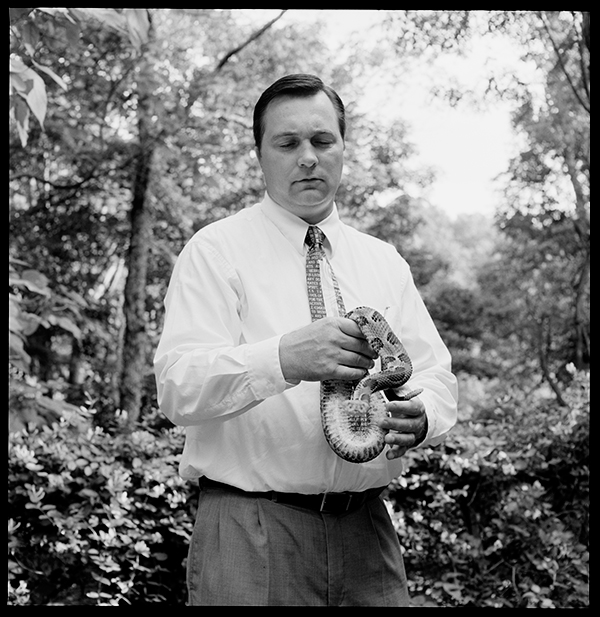 I can thank Instagram and cell phone photography for leading me to the beautiful analog work of Hunter Barnes. I saw an image of Barnes' book, A Testimony of Serpent Handling, in someone's feed, Googled the photographer, and landed smack dab in the middle of this intimate and quiet work. I reached out to Barnes and asked if he'd be interested in collaborating on something for Looking at Appalachia and he agreed.
I can thank Instagram and cell phone photography for leading me to the beautiful analog work of Hunter Barnes. I saw an image of Barnes' book, A Testimony of Serpent Handling, in someone's feed, Googled the photographer, and landed smack dab in the middle of this intimate and quiet work. I reached out to Barnes and asked if he'd be interested in collaborating on something for Looking at Appalachia and he agreed.